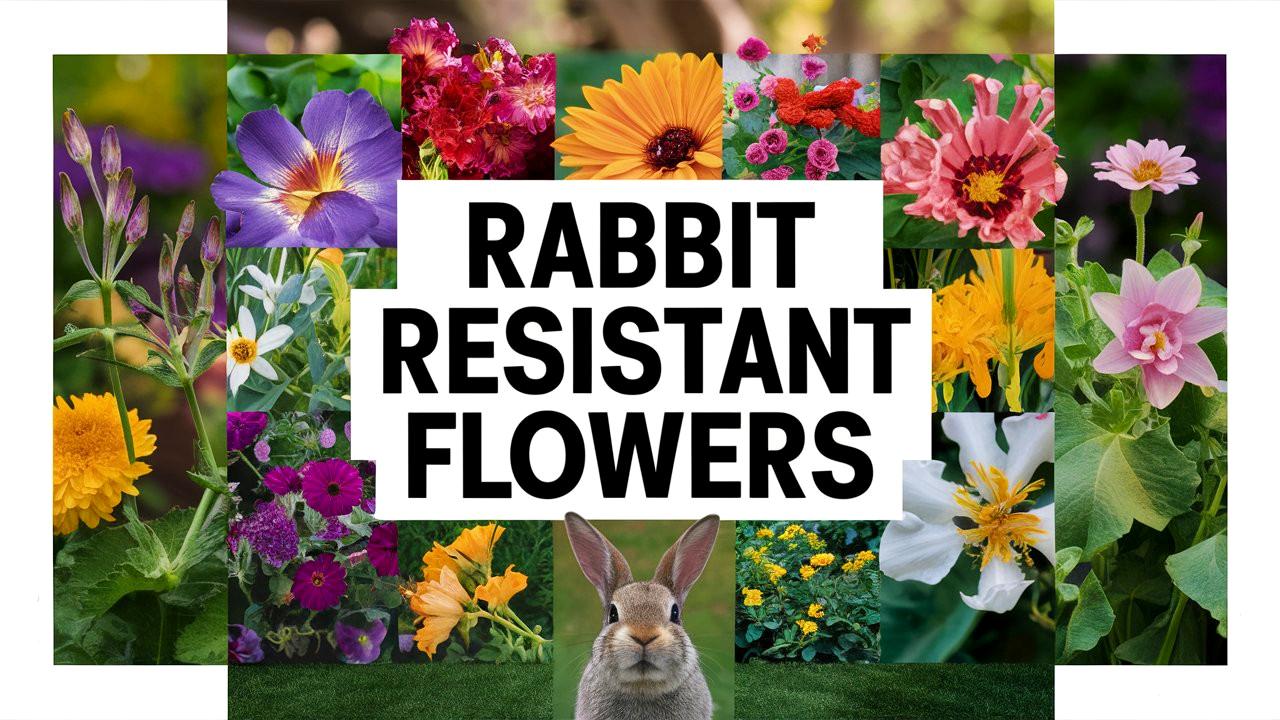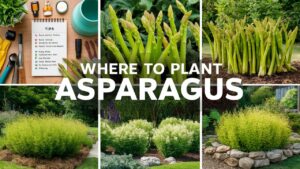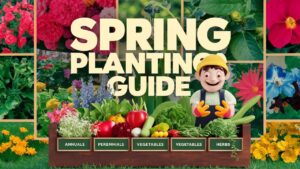Creating a beautiful garden can be a labor of love, but one of the biggest challenges for gardeners is dealing with hungry rabbits. These critters might seem cute, but they can wreak havoc on freshly planted flowers. Fortunately, various flowers are known for being rabbit-resistant, which means they possess characteristics that make them unpalatable or undesirable to these nibbling visitors.
Asters
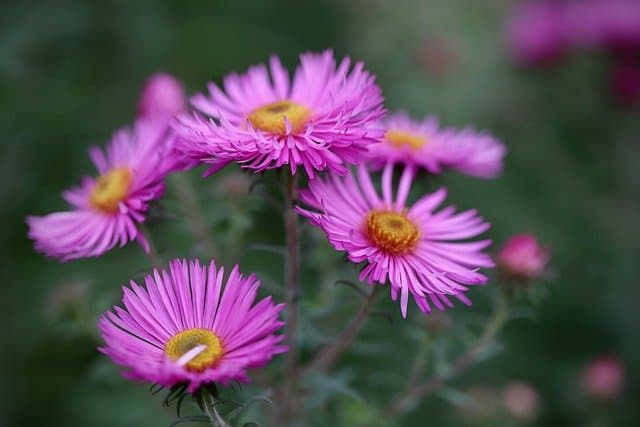
Asters are perennial favorites in gardens, known for their vibrant colors and late summer blooms. These flowers produce daisy-like blossoms that come in shades ranging from white to deep blue, often attracting butterflies and other pollinators. Rabbits tend to avoid asters due to their slightly tough texture and strong scent.
When planning to introduce asters into your garden, consider planting them in well-drained soil and in areas that receive full sun or partial shade. They are relatively low-maintenance, needing only occasional watering and deadheading to promote further blooms. Additionally, asters can thrive in various soil types, which makes them a versatile choice. Their resilience and minimal care requirements make them a favorite among those looking to garden sustainably while being mindful of wildlife.
Vinca
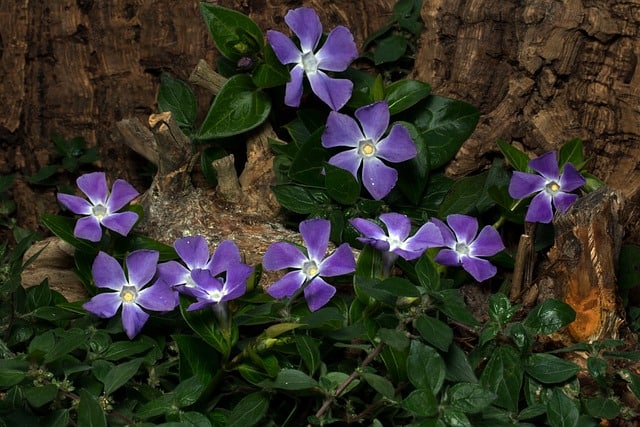
Vinca, or periwinkle, is a charming ground cover that not only resists rabbits but also provides year-round greenery and vibrant flowers. The glossy leaves and star-shaped flowers, typically in shades of purple or blue, add a lovely touch to any garden. One of the most appealing features of vinca is its drought resistance; it thrives in sunny to partly shaded areas and adjusts well to poor soil conditions.
To grow vinca successfully, ensure you provide ample space for it to spread, as this plant can quickly take over an area if left unchecked. It does well in garden beds, borders, and even in container arrangements. Given its rabbit-resistant nature, vinca is ideal for those seeking both beauty and practicality in their green spaces.
Russian Sage
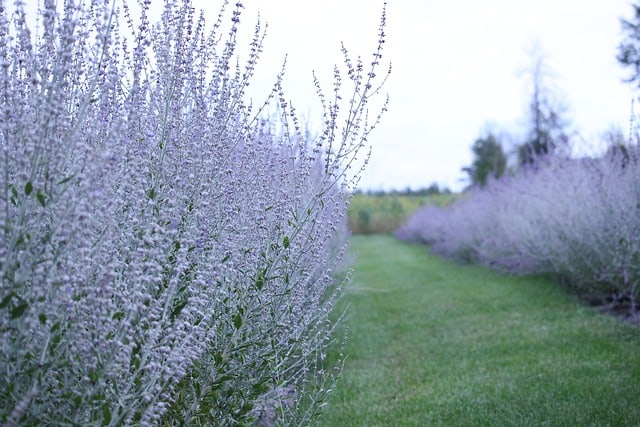
Russian Sage (Perovskia atriplicifolia) is renowned for its aromatic foliage and tall, spiky clusters of pale blue flowers that bloom from summer through fall. This perennial is not only stunning; it is also drought-tolerant once established, making it an excellent option for low-maintenance gardens.
Rabbits avoid Russian Sage due to its strong scent and hairy leaves, which can also deter other garden pests. To cultivate this plant effectively, site it in full sun and well-drained soil. Russian Sage is not overly demanding and only requires occasional watering. It’s an excellent addition to rock gardens, herb gardens, or as a border plant, combining functionality with aesthetic appeal.
Lilac
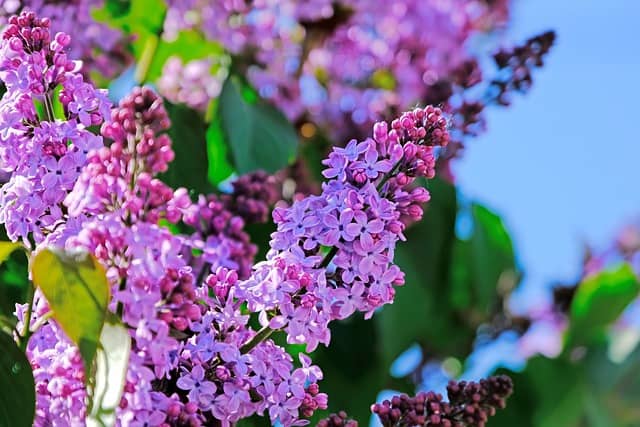
Lilacs are a classic garden plant, beloved for their fragrant, purple blooms. They are typically resistant to rabbits due to their woody stems and thick foliage. Lilacs thrive in well-drained soil and prefer sunny locations, needing at least six hours of direct sunlight each day to flourish.
This plant can grow quite large, so consider its full-grown size when planting. Regular pruning after flowering can help maintain shape and encourage vigorous blooms in subsequent seasons. Lilacs also attract bees and butterflies, making them a fantastic addition if you’re looking to create a pollinator-friendly garden. Their captivating scent during the blooming season is an added bonus that enhances the sensory experience of your outdoor space.
Black-eyed Susan
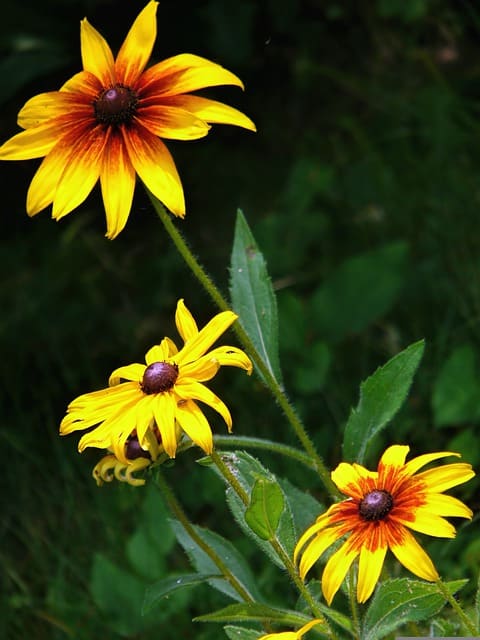
Black-eyed Susans (Rudbeckia hirta) are bright, cheerful flowers that easily draw attention with their yellow petals and dark centers. These hardy perennials are not only rabbit-resistant but are also exceptionally easy to grow, making them a great choice for beginner gardeners. Their tough texture and slightly hairy leaves make them less appealing to furry foragers.
Plant these beauties in full sun for the best blooming results, as they thrive in dry to moderately moist soil. Black-eyed Susans are also drought-tolerant and can naturalize in garden settings, requiring minimal maintenance once established. They can be utilized in cottage gardens, wildflower patches, and as borders, attracting pollinators and adding vibrant splashes of color throughout the growing season.
Irises
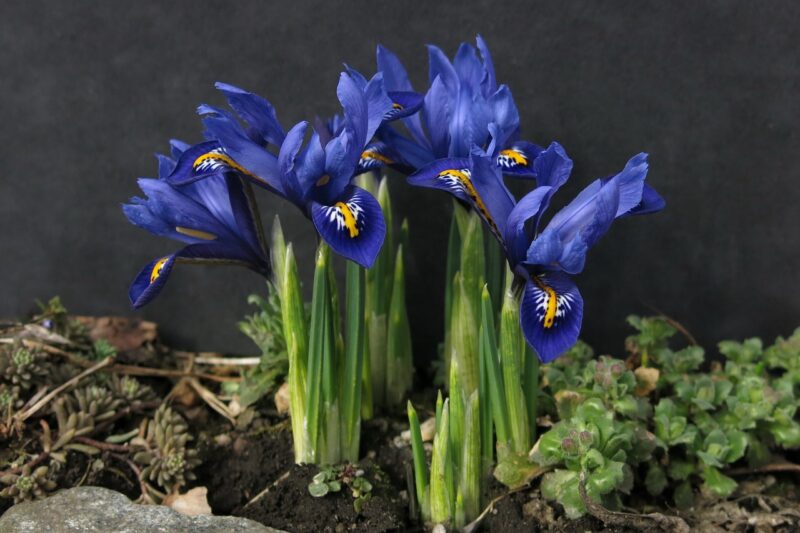
Irises are a stunning group of flowers that come in various colors and forms, making them a beloved choice for many gardens. These perennial plants produce striking blooms that can light up any landscape. Rabbits tend to steer clear of irises due to their tall, upright leaves and non-desirable taste.
To grow irises successfully, plant them in well-drained soil with good sunlight exposure. They prefer a slightly acidic to neutral pH for optimal growth. Regular division every few years helps maintain vigor and promote healthy blooms. With their regal appearance, irises work beautifully in borders, containers, and cut flower arrangements, making them a multifunctional addition to the garden.
Marigold
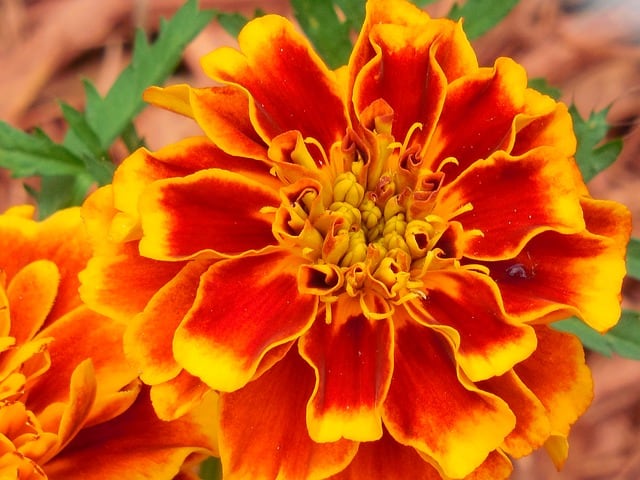
Marigolds are celebrated for their vibrant colors and ability to repel pests, including rabbits. These annual flowers emit a pungent odor that many animals find unappealing. Marigolds come in a variety of species, with varying heights and colors – from bright yellows to deep oranges, they bring warmth and cheer to any garden.
These flowers are easy to grow from seeds or transplants and prefer full sun, thriving in well-drained soil. They require regular deadheading to prolong blooming and can be used effectively in vegetable gardens to deter harmful insects. Their cheerful blooms make marigolds suitable for garden beds, containers, and as borders for walkways.
Peonies
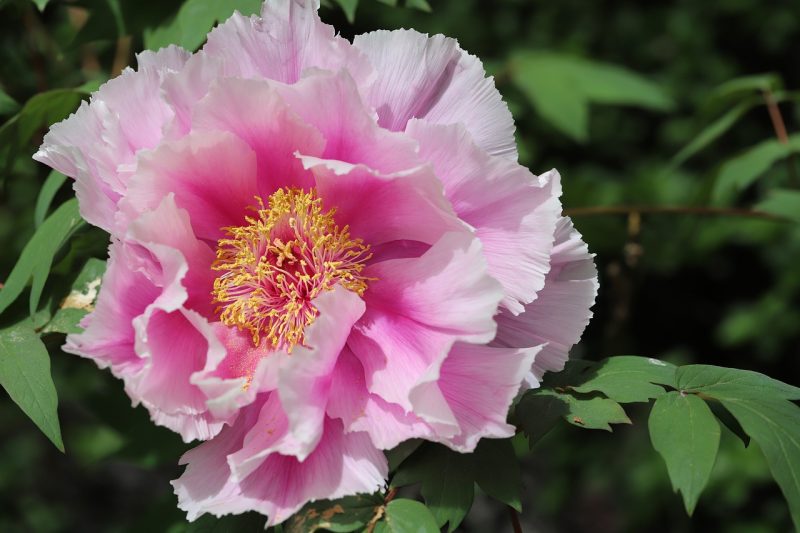
Peonies are perennials that are revered for their lush blooms and sweet fragrance, often symbolizing prosperity and good fortune. While these flowers might not be the first defense against rabbits, their woody stems and dense foliage tend to deter them. Peonies are also resistant to many diseases and pests, making them a low-maintenance choice for gardeners.
They thrive best in full sun, requiring fertile, well-drained soil for healthy root development. Once planted, peonies can live for several decades, making them an excellent long-term investment for your garden. Their large, fragrant blooms can be a highlight in flower arrangements and work well in mixed borders or cutting gardens.
Bleeding Heart
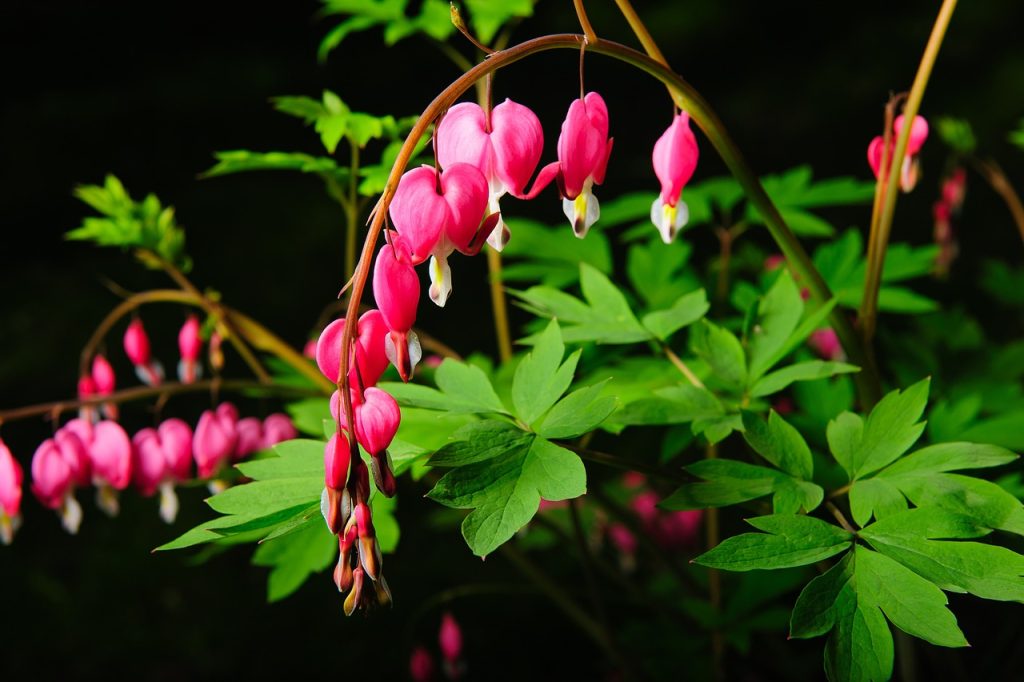
Bleeding Heart (Dicentra spectabilis) is an exquisite perennial that earns its name from its unique heart-shaped flowers that dangle like ornaments in spring. While rabbits may nibble on some garden plants, they often bypass the bleeding heart due to its toxic foliage, making it a safe choice for rabbit-prone gardens.
These plants prefer partial to full shade and moist, rich soil for optimal growth. They may require some support in windy areas due to their delicate stems. Bleeding hearts are ideal for woodland gardens and shady borders, adding a touch of elegance with their drooping blossoms and fern-like foliage.
Foxglove (Digitalis purpurea)
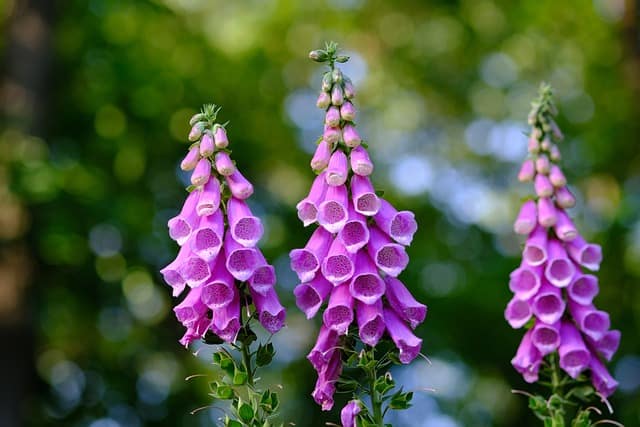
Foxgloves are globally recognized for their striking, tubular flowers that bloom on tall spikes, available in various colors. These biennials are often overlooked when it comes to rabbit resistance, but their toxic nature helps keep these furry pests at bay.
Training foxgloves can yield vibrant and impressive displays, best planted in well-drained soil with partial shade. While they add vertical interest to borders and cottage gardens, remember that all parts of the plant are toxic if ingested, so proper placement is advised to avoid accidental consumption by pets or children.
Coral Bells (Heuchera sp.)
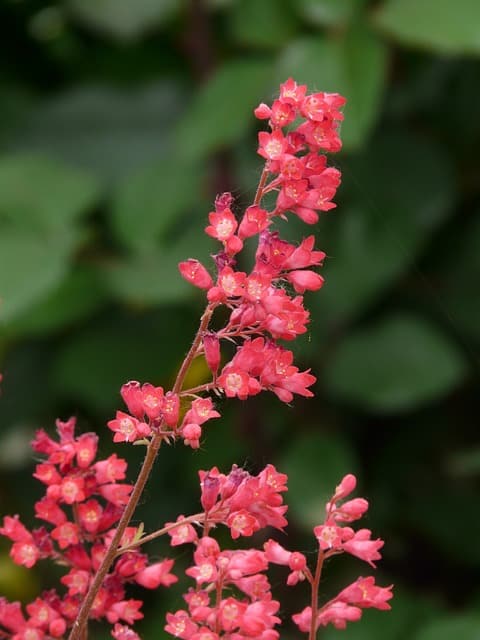
Coral Bells, known for their lovely foliage and delicate flowers, offer excellent color variety with leaves ranging from deep burgundy to bright lime green. Their leaves tend to be unpalatable to rabbits, making them a desirable option for those battling garden invasions.
These perennials thrive in partial shade and well-drained soil, adapting well to various garden conditions. Additionally, their low growing height makes them perfect for edging or filling in perennial borders. During the summer, long stalks of small bell-shaped flowers add another layer of interest, attracting fairies and pollinators while onlookers enjoy the visual beauty they bring.
Solomon’s Seal
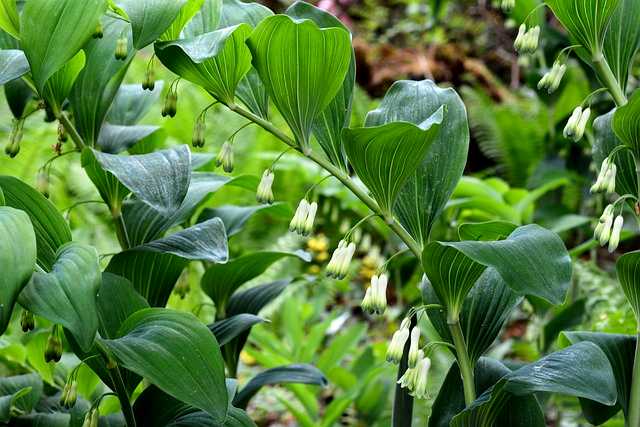 Solomon’s Seal (Polygonatum spp.) features arching stems with elegant, bell-shaped flowers and lush green foliage, creating a beautiful addition to shade gardens. This perennial tends to be avoided by rabbits due to its toxicity if ingested.
Solomon’s Seal (Polygonatum spp.) features arching stems with elegant, bell-shaped flowers and lush green foliage, creating a beautiful addition to shade gardens. This perennial tends to be avoided by rabbits due to its toxicity if ingested.
Plant Solomon’s Seal in rich, well-drained soil with partial to full shade. These low-maintenance plants do well in woodland settings or shaded borders, adding soft texture without overwhelming other garden elements. Additionally, they are resilient to drought once established, making them practical for longer summers without excessive watering.
Butterfly Weed (Asclepias tuberosa)
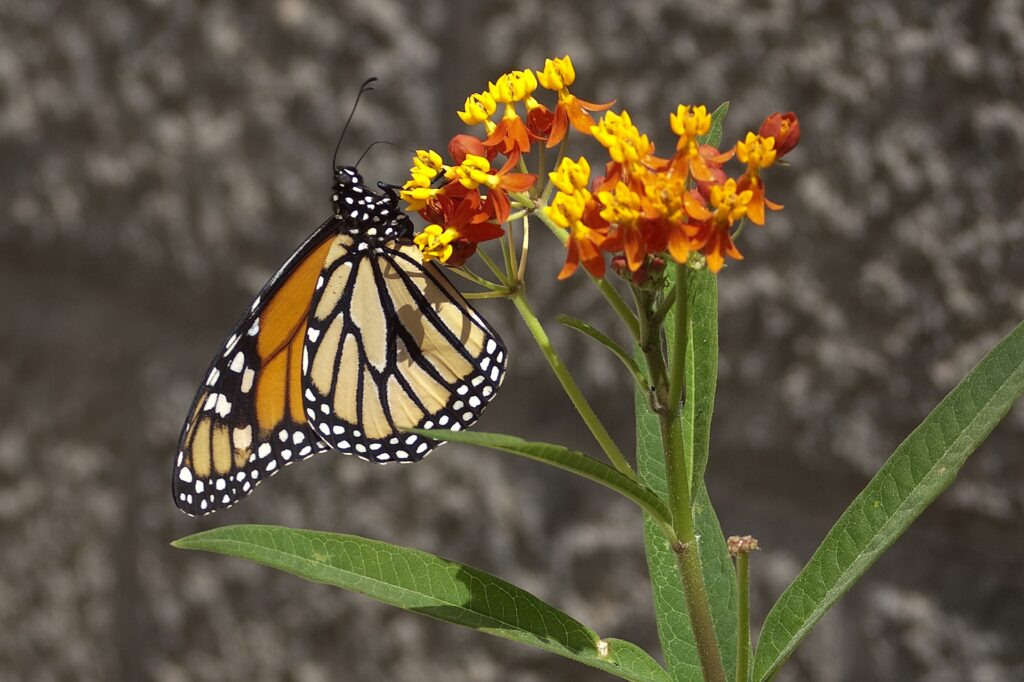
Butterfly weed is a robust perennial that captivates gardeners with its vibrant orange clusters of flowers. Its nectar-rich blooms attract butterflies, especially the monarch, establishing symbiotic relationships in garden ecosystems. Butterflies adore these blooms for their food sources, while rabbits tend to avoid them because of their milky sap, which can be irritating.
This drought-tolerant plant thrives in full sun and dry to moderately moist soil. Plant it in well-drained locations to ensure optimal health and blooming potential. Butterfly weed is perfect for wildflower gardens and can enhance natural landscapes, making it a vital plant for supporting local wildlife.
Red Hot Poker
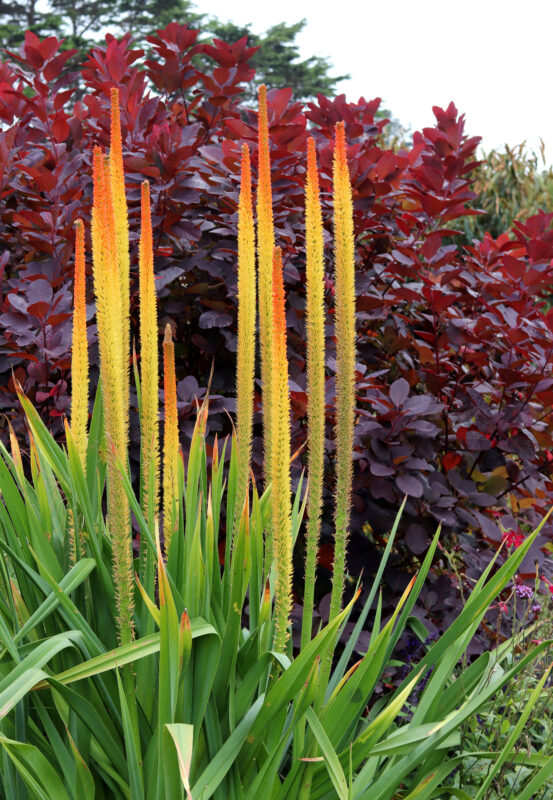
The Red Hot Poker (Kniphofia spp.) is a dramatic accent for any garden with its torch-like flower spikes that bloom in vibrant shades of red, orange, and yellow. These hardy perennials are rabbit-resistant due to their tough, fibrous leaves and their stiff floral arrangements that are less appealing to grazers.
Thriving in well-drained soil with full sun exposure, Red Hot Poker can create a focal point or add vibrant color to borders and mixed beds. They are drought-tolerant once established and are known for their ability to attract nectar-loving birds.
Bee Balm
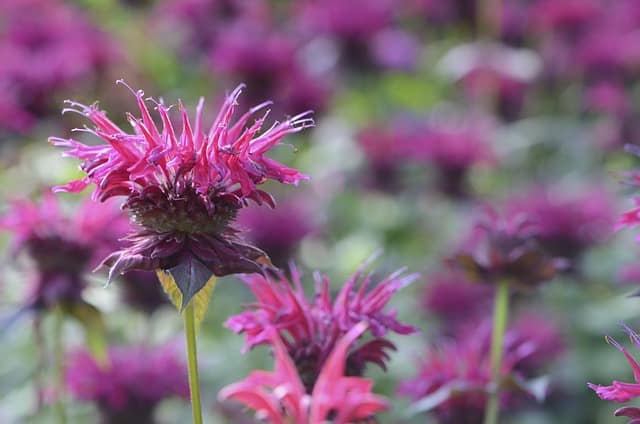
Bee Balm (Monarda spp.) is not only beautiful with its ruffled flower tops but also invaluable for its role in attracting pollinators. Its aromatic foliage makes it unappealing to rabbits, who generally avoid this flowering plant. Bee Balm is a fantastic choice for herbal gardens and landscape settings where biodiversity is valued.
These plants thrive in rich, moist soils and prefer full sun to partial shade. Bee Balm works exceptionally well in cottage gardens or as part of wildflower patches. With a range of colors available, from red to purple, their blooms create a casual vibe while inviting essential pollinators into your outdoor space.
Ornamental Onion
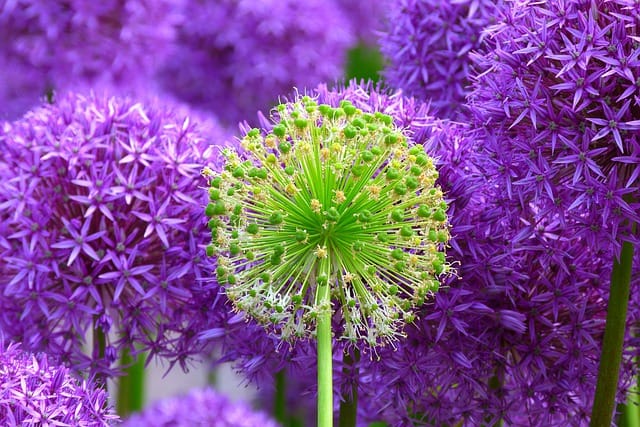
Ornamental onions (Allium spp.) contribute both beauty and a degree of pest resistance to the garden. Their globe-like flower heads and pungent scent tend to deter rabbits and other nuisances while providing striking visual interest.
Allium prefers sunny spots with well-drained soil and can thrive in various low-maintenance settings, including rock gardens and borders. They can be left undisturbed for years, making them a reliable and resilient addition to any landscape. Their tall flower stalks can act as architectural elements, providing height and drama when placed alongside shorter flowers.
Pachysandra Terminalis
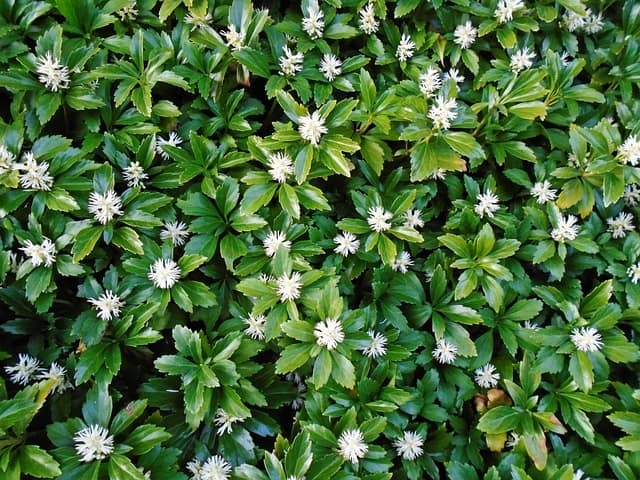
Pachysandra terminalis, or Japanese Spurge, is a perennial ground cover that excels in shady areas. Its glossy, evergreen leaves provide ground coverage while producing small, white flower spikes in spring. This plant is typically rabbit-resistant due to its bitter taste and dense nature, making it less attractive for them to munch on.
To cultivate Pachysandra, use it in shaded areas under trees or as a lovely border. It is also drought-tolerant once established, enhancing its appeal for gardeners looking for easy-care options that still bring beauty to their landscape. This plant not only provides visual interest but also serves as an effective solution for combating soil erosion in shady spots.
Lamium maculatum
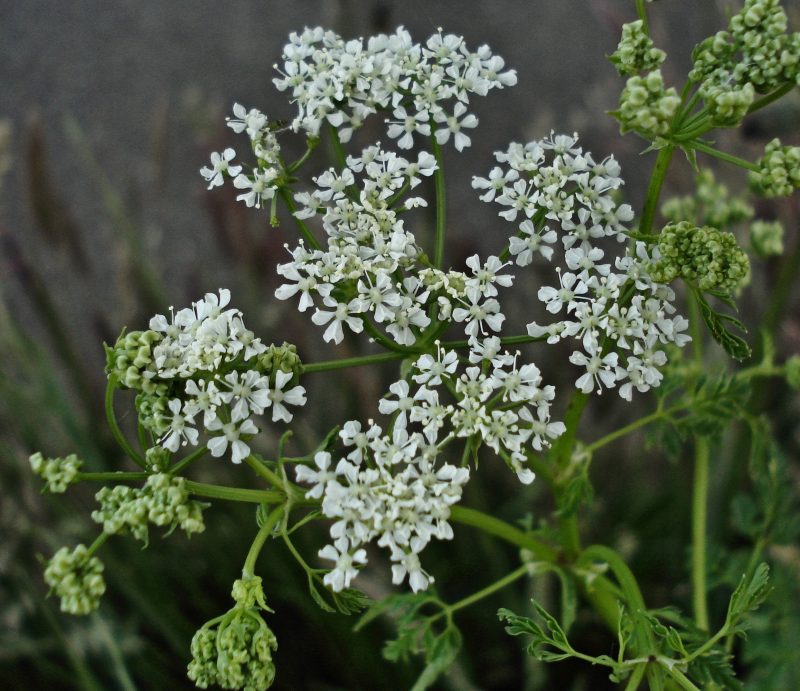
Lamium maculatum, or spotted dead nettle, is an excellent ground cover that brings softness to shady garden areas. Its unique foliage, often marked with silver or white spots, pairs perfectly with delicate blooms that attract various pollinators. Rabbits tend to avoid Lamium due to its slightly undesirable taste.
To cultivate Lamium, ensure to provide moist, well-drained soil in shaded areas of the garden. It makes a beautiful filler for areas under trees or as part of a mixed border, thriving in diverse environmental conditions. With its lovely leaves and flowers, Lamium helps create an inviting habitat for beneficial garden insects while offering a visually appealing ground layer.
Salvia sp.
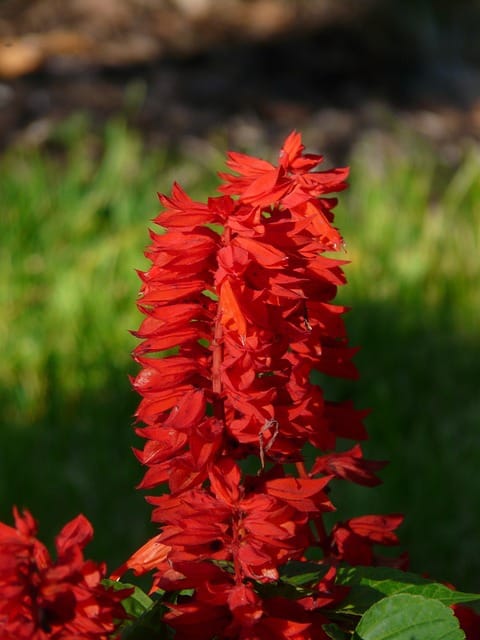
Salvia, or sage, features an incredible variety of species with fragrant leaves and colorful spikes that attract pollinators while deterring rabbits. Many salvia species are rabbit-resistant due to their strong scent and highly aromatic foliage, which most bunnies find unappetizing.
These plants thrive in sun-drenched gardens and well-drained soils, which aids their resilience against drought conditions. With many varieties available, including the popular Salvia nemorosa, gardeners can select from an array of colors, shapes, and heights that fit perfectly into various garden styles. Their resilience and attractiveness make them a cherished addition to flower beds, borders, and cottage gardens.
Lenten Rose
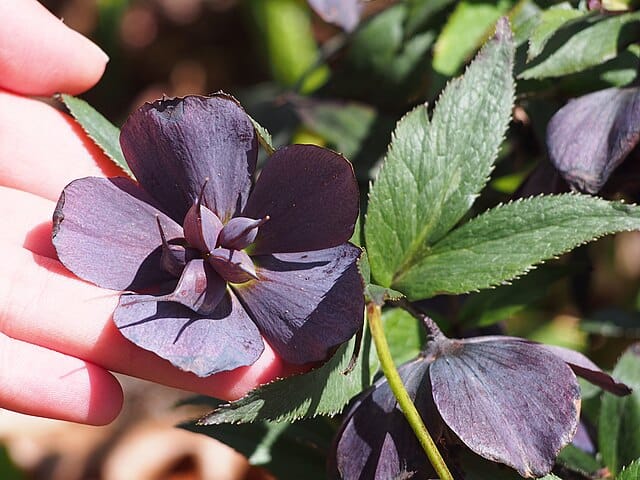
Lenten Rose (Helleborus orientalis) emerges as one of the first perennial plants to bloom in early spring, showcasing stunning blossoms in hues such as cream, pink, purple, or green. The foliage is often avoided by rabbits due to its toxic properties, making Lenten Rose a wise choice for gardens that face frequent rabbit issues.
Best suited for shady areas with rich, well-drained soil, Lenten Rose adapts well to various conditions. They are relatively low-maintenance plants, often thriving without much assistance once established. With their long bloom period and evergreen foliage, they create visual interest even during the winter months, proving to be a reliable and attractive choice for many gardens.
Hardy Geraniums

Hardy geraniums are perennial favorites that offer cheerful blooms from late spring to summer. These tough plants, characterized by their resilience and adaptability, not only survive in various conditions but are also typically avoided by rabbits due to their bitter taste and fibrous leaves.
These adaptable plants thrive in well-drained soil with partial to full sun exposure. Hardy geraniums function wonderfully in borders, garden beds, or rocky areas. Their long-lasting blooms and ability to thrive in challenging conditions make them a sought-after choice for gardeners looking for reliable flowers that won’t fall prey to hungry visitors.
Zinnia
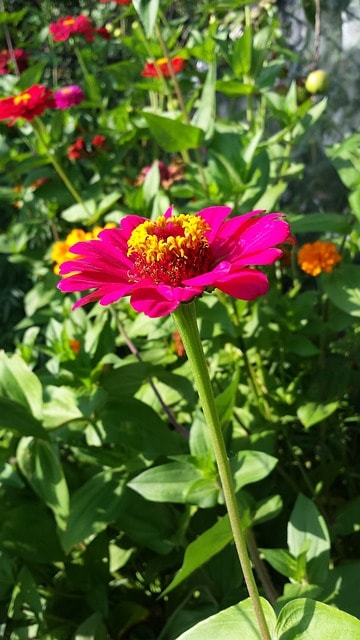
Zinnias are outstanding annual flowers known for their vibrant colors and hardiness. While rabbits may nibble on some garden plants, zinnias tend to be avoided due to their somewhat thorny and tough leaves. They are excellent plants for attracting butterflies, providing ample charm to any garden.
Zinnias thrive in full sunshine and benefit from rich, well-drained soil. They come in various heights, which makes them suitable for both borders and container displays. Due to their easy care and bold colors, zinnias are perfect for new gardeners looking to make a statement without dealing with excessive maintenance.


